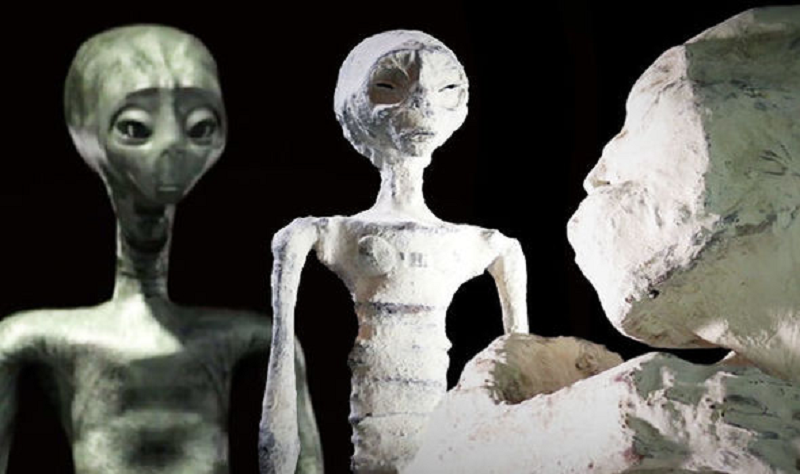The search for extraterrestrial life has captivated human imagination for centuries, and as science advances, our quest for understanding extends to the very building blocks of life itself. One of the central questions in astrobiology is whether extraterrestrial DNA, if it exists, bears any resemblance to the genetic code of life on Earth. In this exploration, we delve into the possibilities and challenges surrounding the concept of extraterrestrial DNA.
I. The Blueprint of Life: Understanding Earthly DNA

a. DNA on Earth: Deoxyribonucleic acid, or DNA, serves as the fundamental genetic material for all known life on Earth. Structured as a double helix, DNA carries the instructions necessary for the development, functioning, growth, and reproduction of living organisms. The universal presence of DNA among terrestrial life forms suggests its crucial role in the emergence and evolution of life.
b. Genetic Code Similarities: Despite the incredible diversity of life on Earth, there are striking similarities in the genetic code shared by all living organisms. This universal genetic language, consisting of four nucleotide bases—adenine (A), thymine (T), cytosine (C), and guanine (G)—forms the basis of DNA’s information storage. The parallels in the genetic code across species hint at a common ancestry and shared evolutionary history.
II. The Challenge of Alien DNA: Divergence or Convergence?

a. Different Biochemistries: Extraterrestrial life, if it exists, may not adhere to the same biochemistry as life on Earth. While carbon-based life is a familiar concept, other elements could serve as the basis for alien biochemistry. Silicon, for instance, has been proposed as an alternative to carbon in forming the backbone of extraterrestrial DNA. Such divergences challenge our expectations and broaden the scope of potential life forms.
b. Convergent Evolution: On the other hand, convergent evolution suggests that, despite different origins, extraterrestrial life might develop similar genetic structures due to similar environmental pressures. If the conditions on distant planets mirror those on Earth, the evolution of DNA as a stable and efficient information storage system could be a convergent outcome.
III. Analyzing Alien DNA: Technological Challenges and Possibilities

a. Technological Hurdles: The detection and analysis of extraterrestrial DNA present monumental challenges. Current technologies are designed to study Earth-based life, and the assumption that alien DNA shares common features could lead to false negatives. Developing tools capable of identifying and decoding non-terrestrial genetic material is a complex and speculative task.
b. Sample Collection: Another challenge lies in the acquisition of extraterrestrial samples. Current space exploration missions are primarily focused on robotic exploration and lack the capability to retrieve biological samples from distant planets or moons. Future missions with sample return capabilities could be crucial in providing insights into the potential existence of alien DNA.
IV. Myterity and Alien UFO

a. The Unknown Frontier: The study of extraterrestrial DNA stands at the frontier of astrobiology, blending scientific inquiry with myterity. As we contemplate the possibilities of life beyond Earth, the enigma of alien DNA adds a layer of complexity to our understanding. The inherent myterity sparks curiosity and fuels our collective imagination as we strive to unlock the secrets of the cosmos.
b. Implications for UFO Studies: Consideration of extraterrestrial DNA has implications for UFO studies. If life beyond Earth shares genetic similarities with terrestrial life, it could influence how we interpret potential biological traces associated with reported UFO encounters. The myterity surrounding the genetic makeup of extraterrestrial life adds an intriguing dimension to the ongoing exploration of unidentified aerial phenomena.

The question of whether extraterrestrial DNA resembles life on Earth is a profound inquiry that intertwines scientific rigor with the allure of the unknown. As we venture into the uncharted territories of astrobiology, we confront the challenges of understanding life forms that may operate on entirely different genetic codes. The myterity of alien DNA underscores the vastness of the cosmic landscape and the ongoing quest to uncover the mysteries of life beyond our home planet.


![Could Alien Life Be Based on Silicon? AFO – Clear UFO From Plane Window. Best UFOs of October 2023 [w32jtuP6Edo – 1266×712 – 10m35s]](https://model.icusocial.com/wp-content/uploads/2023/11/AFO-Clear-UFO-From-Plane-Window.-Best-UFOs-of-October-2023-w32jtuP6Edo-1266x712-10m35s-300x168.png)





